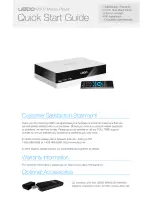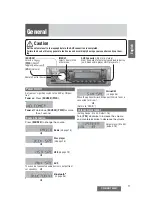
12/1/2006
12
SERIAL INTERFACE
The 102PC-SE provides an EIA-232 interface accessed via a 9 pin male connector (labeled ‘COM’ on the unit). This
is used to access the Command Line Interpreter (CLI), and to attach serial devices to the network over Ethernet. The
pin-outs are shown below:
Default Port Settings:
Baud-Rate:
115200
Data Bits:
8
Parity:
None
Stop Bits:
1
Flow Control:
Hardware
RTS-CTS
Serial Cable
Connect the serial COM port of your PC and the 102PC-SE Protocol Converter using a standard straight through
cable. You will need a cable with a 9-pin or 25-pin sub-D female connector for the PC end (DTE device), and a 9-pin
female sub-D connector for the 102PC-SE end (DCE device).
The following table shows the pin-out and the connections for a straight through cable:
PC/DTE Device Cable End
102 PC-SE Cable End
DTE Device
25-Pin
9-Pin
Port
Female
Female
9-Pin Female
Signal Name
Pin #
Pin #
Pin #
Signal Name
DCD
8
1
1
DTR
RXD
3
2
2
TXD
TXD
2
3
3
RXD
DTR
20
4
4
DSR & DCD
GND
7
5
5
GND
DSR
6
6
6
DTR
RTS
4
7
7
CTS
CTS
5
8
8
RTS
Connect the serial COM port of your DCE device and the 102PC-SE Protocol Converter using a null modem cable.
You will require a cable with a 9-pin or 25-pin sub-D connector for your DCE device end, and a 9-pin female sub-D
connector for the 102PC-SE end.
The following table shows the pin-out and the connections for a null modem cable:
DCE Device Cable End
102 PC-SE Cable End
DCE Device
25-Pin
9-Pin
Port
Female
Female
9-Pin Female
Signal Name
Pin #
Pin #
Pin #
Signal Name
DTR
8
6+1
4
DSR & DCD
TXD
3
2
3
RXD
RXD
2
3
2
TXD
DSR & DCD
20
4
6+1
DTR
GND
7
5
5
GND
CTS
4
7
8
RTS
RTS
5
8
7
CTS
PIN
RS-232
1
DTR
2
TXD
3
RXD
4
DSR & DCD
5
GND
6
DTR
7
CTS
8
RTS













































